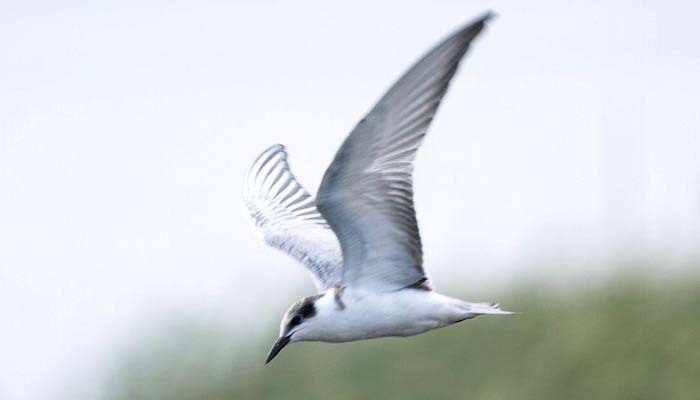
English: Black
Tern
Russian: Чёрная крачка
Mongolian: Хилэн хараалзай, Хилэн хараалай
German: Trauerseeschwalbe
French: Guifette noire
Japanese: ハシグロクロハラアジサシ (Hashiguro-kurohara-ajisashi)
Body length: 22-26
cm.
Wing span: 56-62
cm.
Commonest
marsh tern, breeding in freshwater marshes with patches of low, floating
vegetation, often among Black-headed Gulls for protection. Summer visitor
(mainly late Apr-Sep), winters in Africa. In Britain & Ireland, occasional
large migrant gatherings or coastal passage, but seldom numerous.
Identification:
Adult summer: All-black head and body, rather uniform dark grey upperparts,
white undertail, and dark legs and bill; head and underparts mottled or patched
with white on moulting adults in spring (before May) and summer/autumn (white
feathers on head already appearing in Jun).
- Adult
winter (head and body plumage fully acquired Sep onwards); Much as juvenile,
but upperparts plain grey, lacking scaliness, and outer 5-7 primaries darker
than rest.
- Juvenile:
Extensive black cap and obvious dark breast-side patches; scaly pattern on
darkish saddle and wing-coverts; darker carpal and secondary bars; and outer
primaries not contrastingly darker than inner. Could be mistaken for juvenile
Common /Arctic Tern, but more smaller size, shorter, less forked tail, slightly
shorter wings, and dark breast-side patches; mode of flight (see above under
‘Marsh terns’) also good clue.
- 1st
summer (usually stays in winter range): Variable; like adult winter but usually
differing in having darker, more worn outer primaries and darker secondaries,
and on some a few scattered dark feathers on underbody and head (these safely
told only in May-Jun from moulting ad.)